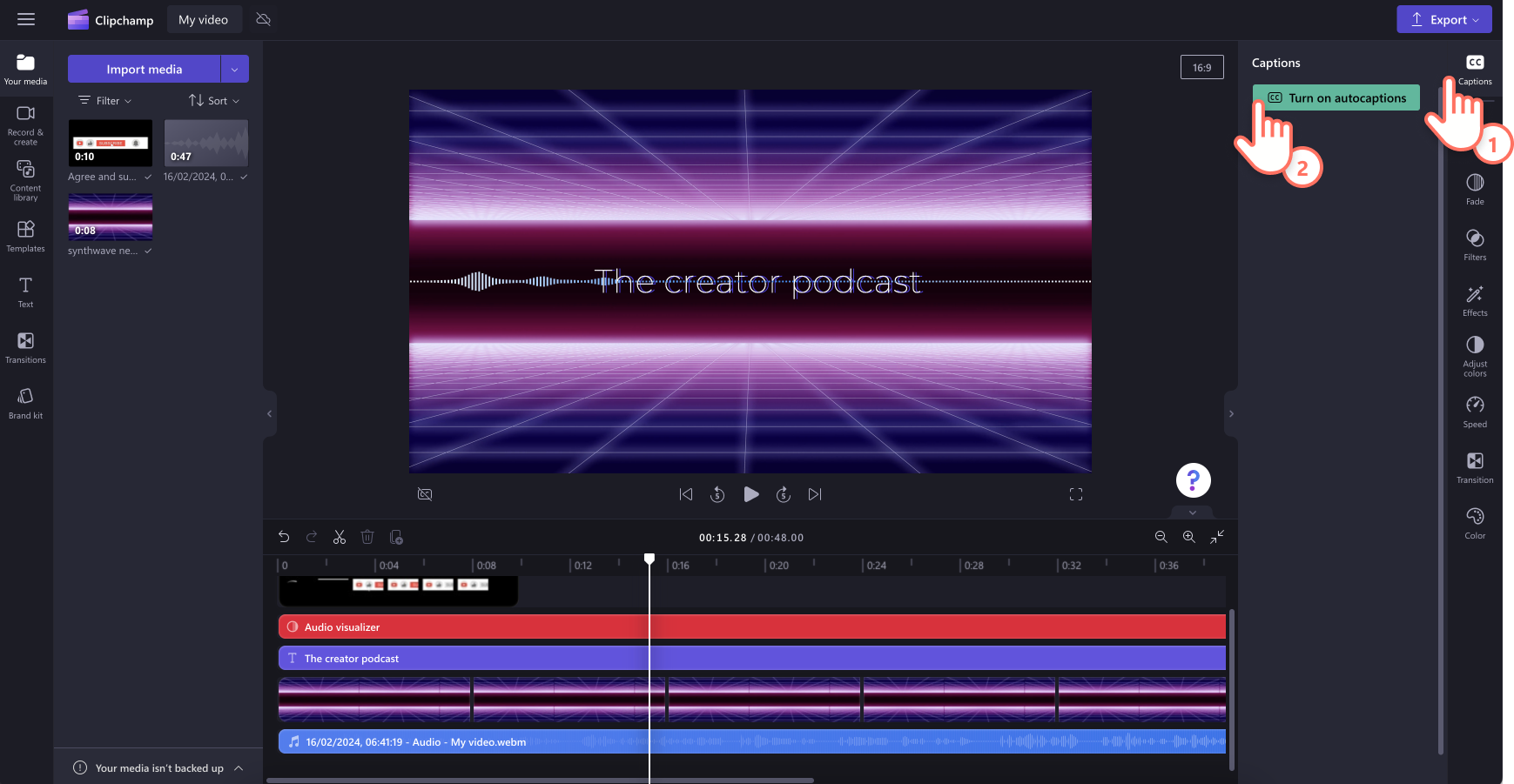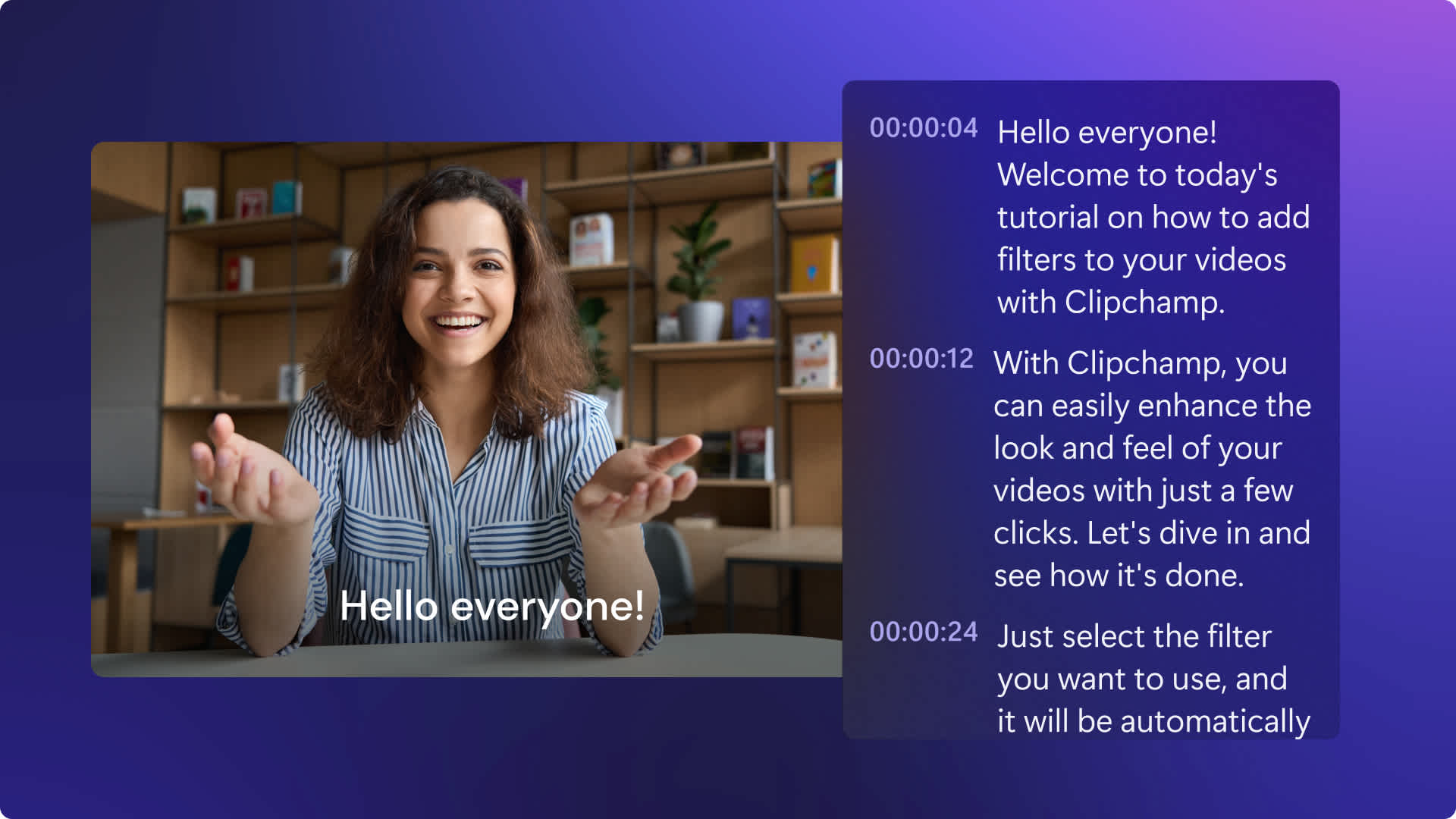Heads up! This content is relevant for Clipchamp for personal accounts. Try this link If you're looking for information about Clipchamp for work accounts.
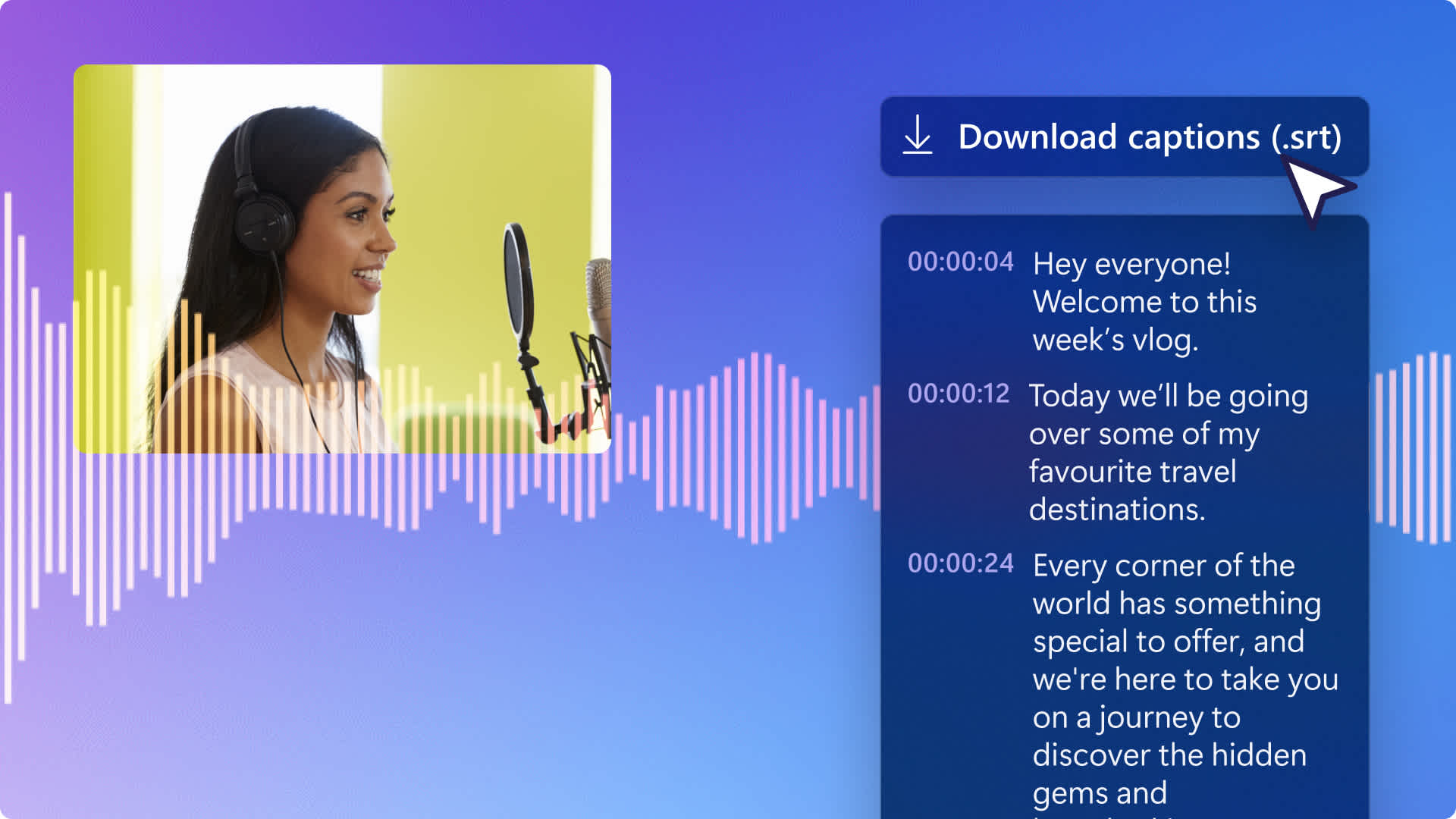
Want to turn your podcast into text in a free, safe way with no downloads required? Try the automatic transcription feature in Microsoft Clipchamp. All you need is your audio or video file ready to upload, and our free AI-powered transcript generator will create accurate subtitles in any language, with your privacy guaranteed. Download your automatic transcription safely and easily in any language in the SubRip (.srt) file format–the most widely supported subtitle file format. With your podcast in this format, you can effortlessly publish it on any of your favorite podcasting platforms, including Spotify and YouTube.
Starting with just an audio file? You can also fine-tune your audio file to add fades, increase or decrease the volume and create a music visualizer video that's great for YouTube podcasting. If you already have a video podcast, enjoy our easy video editing features.
Learn how to create a podcast transcript in minutes with Clipchamp.
How to generate a podcast transcript
Step 1. Create a podcast video or import a file
To import your own podcast audio file or recording, click on the import media button in the your media tab on the toolbar to browse your computer files, or connect your OneDrive.
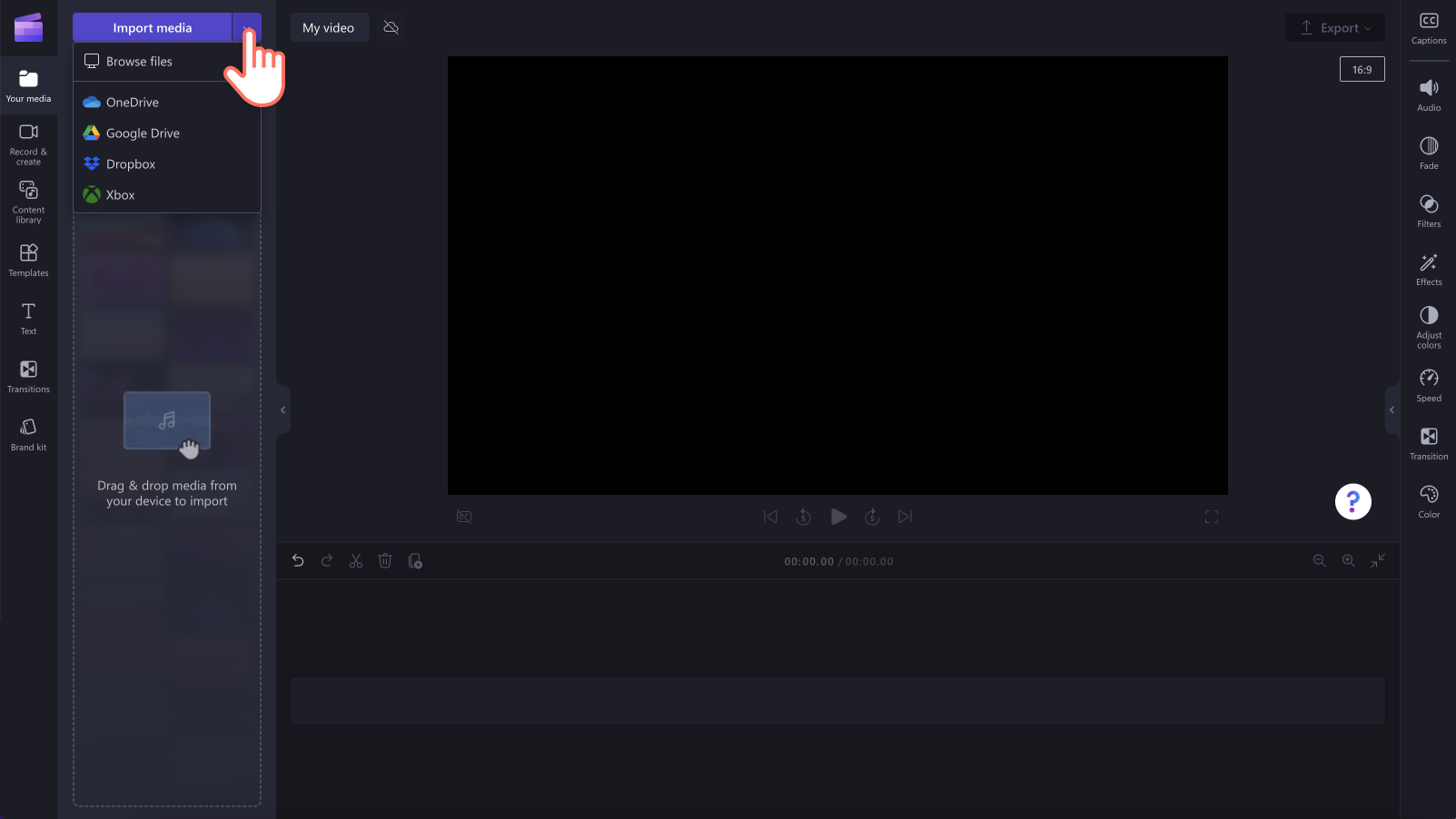
You can also make a podcast video directly in the editor using our in-built recording tools. Select the record & create tab to find the audio recorder and webcam recorder tools.
You can also choose media from our royalty-free stock library from the content library tab. Drag, drop and create a podcast video by arranging your video assets and audio recordings in the timeline.
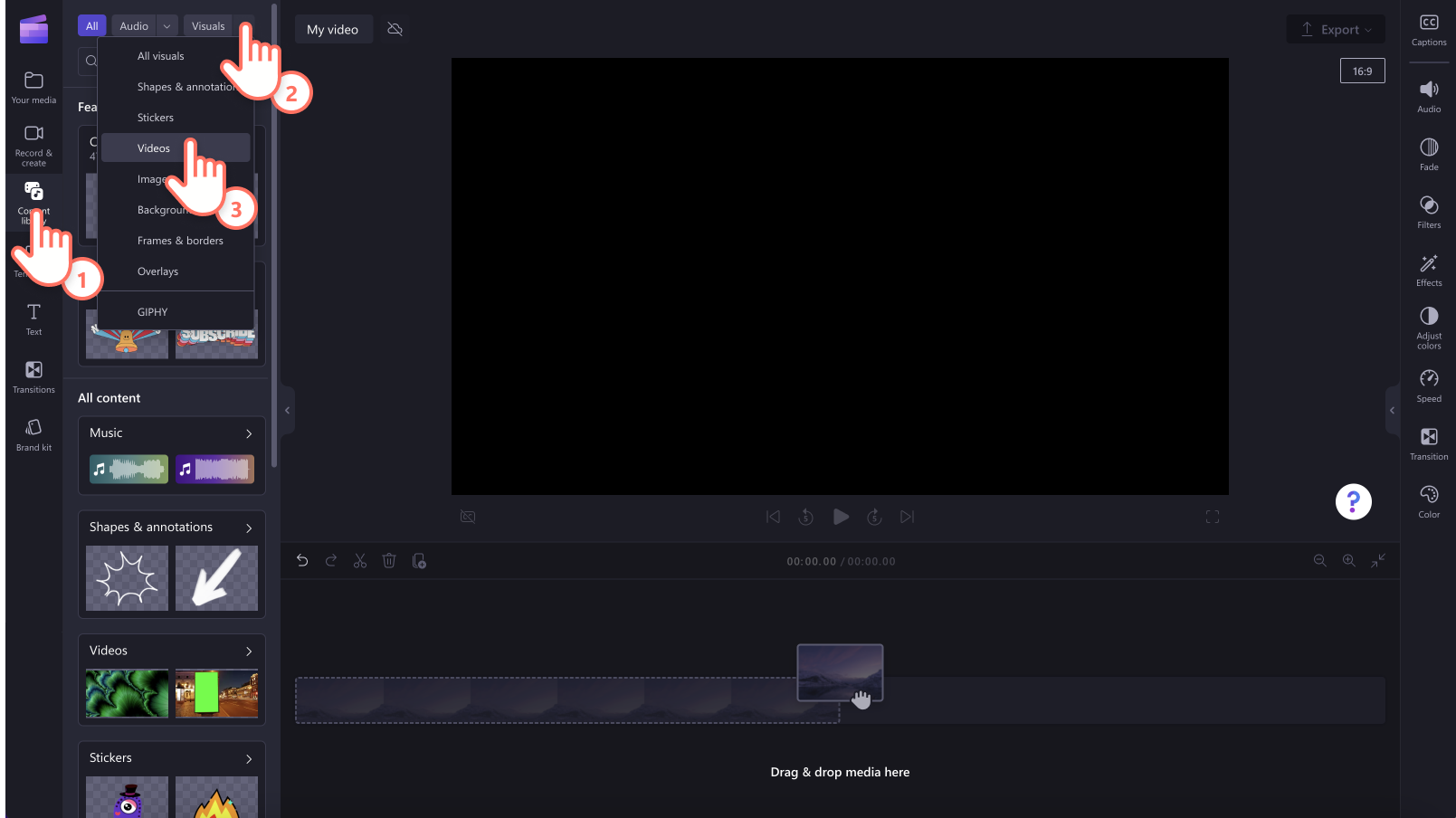
For this tutorial, we're using an audio visualizer-style podcast.

Step 2. Enable captions for your podcast video
To generate the transcript in Clipchamp, use the autocaptions feature. Click on the captions tab on the property panel to enable the feature.
Select the language spoken in your podcast and click on the transcribe media button. Check the box to filter any profanity or offensive language. Our smart voice detection technology will start generating captions from the audio track.
Step 3. Edit podcast transcript
You will automatically return to the editor and see your captions text being generated in the property panel. Your captions will also appear on top of your video content in the video preview as well as the property panel.
Browse through the index of timestamps to help you navigate the transcript. The captions are generated with an advanced speech recognition technology, so they are usually accurate. If you find any spelling mistakes, double-click the text to replace the spelling or delete the words easily.
To navigate the transcript easily, you can browse through the index of timestamps. The captions are typically accurate as they are generated using AI technology. If you happen to find any spelling mistakes, you can easily replace or delete the words by double-clicking on the text.
Step 4. Download your captions
Once your captions have loaded, a transcript will appear in the transcript section of the captions tab on the property panel. Your captions will also appear on the video preview window.
SRT is a standard format for representing subtitles, also known as SubRip subtitle file format. SRT files give you the option to auto add subtitles to a video after it’s produced.
How to use your podcast transcript
Once you have your podcast transcript downloaded, you'll need to upload the file to your podcast hosting service such as Spotify, Buzzsprout, Acast or Podbean. If you're uploading a video podcast to YouTube, you'll need to sign in to your YouTube Studio account and upload subtitles manually following these steps. This way your transcript will appear as closed captions in your video, allowing your audience to read along as they listen.
Many podcasters also create website blog posts using their transcript which is a great way to repurpose your content into a new platform and make it easy to find via search engines. If you're a new podcaster, we recommend using your podcast to find stand-out quotes from your chat or interviews to turn them into podcast promo videos, perfect for TikTok and YouTube. You can create short social media videos with sound bites to give people a taste of what your podcast is all about. Quote videos are snackable and highly shareable and can attract new listeners to your podcast! You can get started with easily editable video templates in Clipchamp.
Create a video transcript today with Clipchamp for free or download the Clipchamp Windows app.
To create podcast videos with animated sound waves in minutes, explore how to make an audio visualizer.

